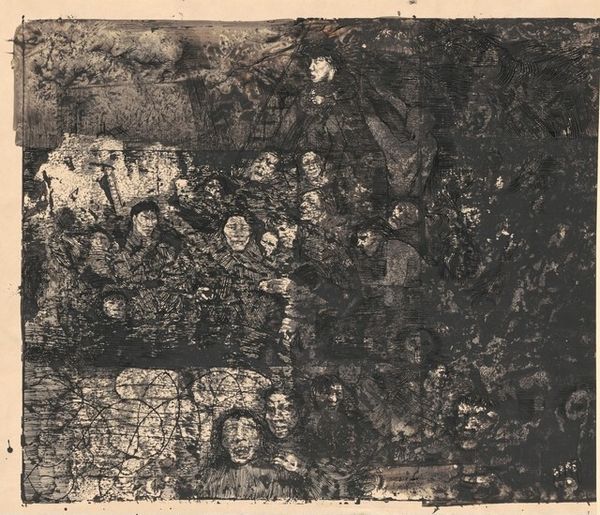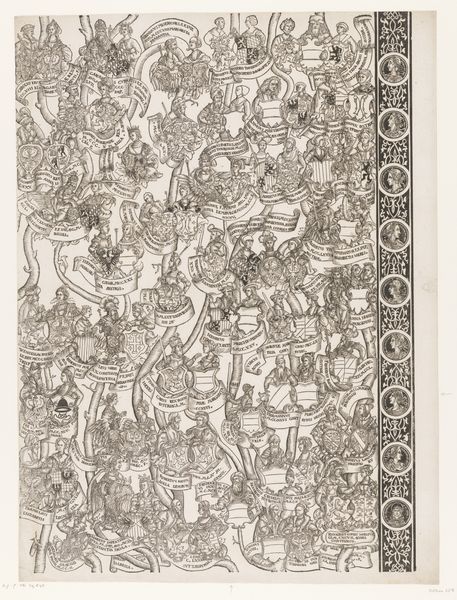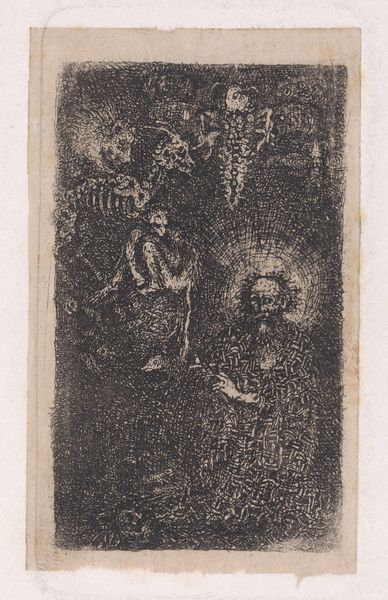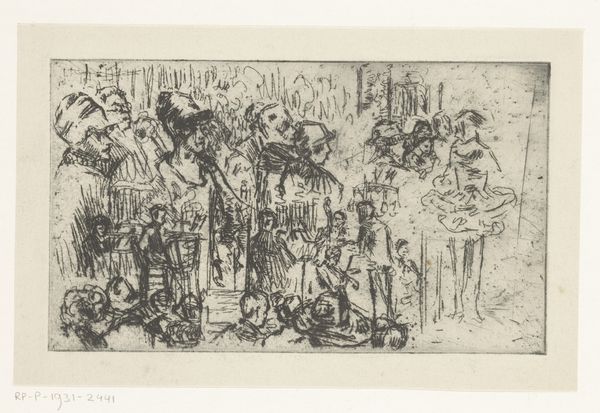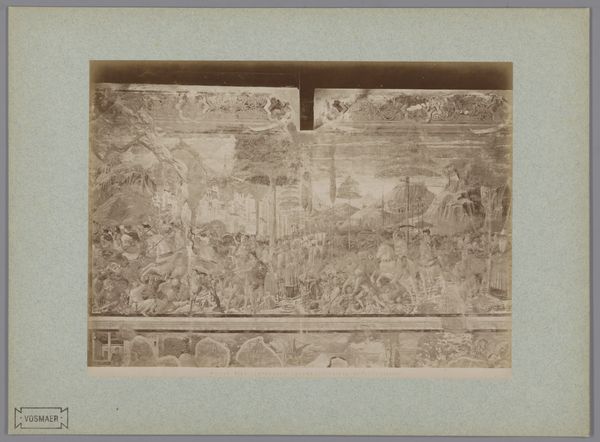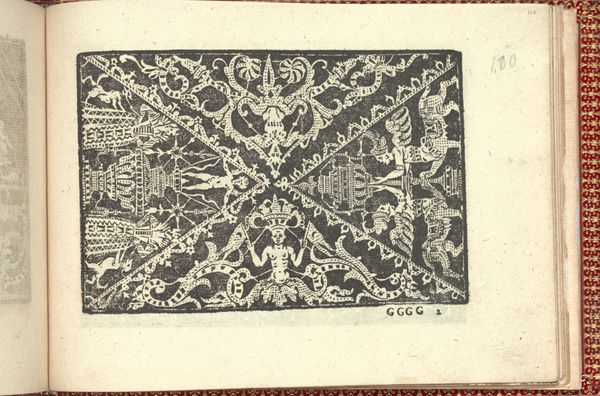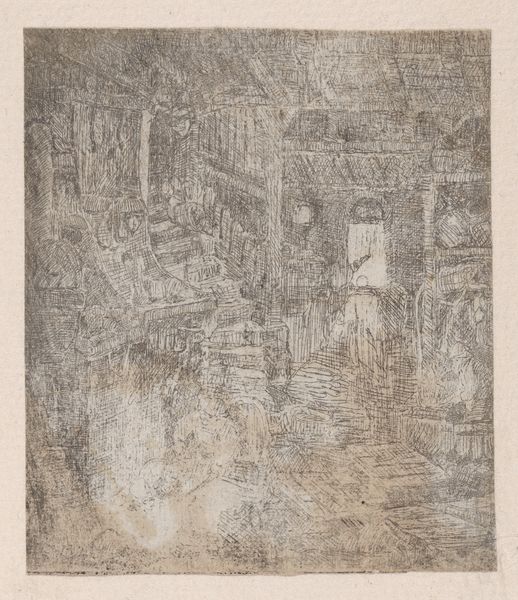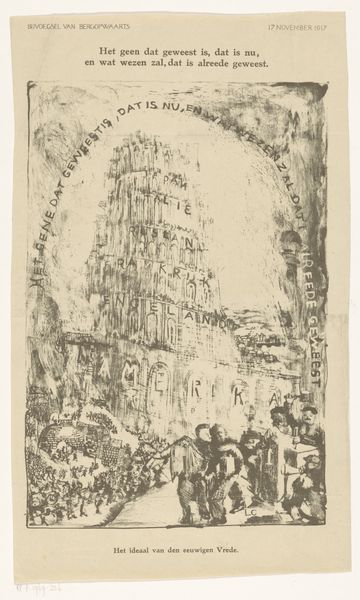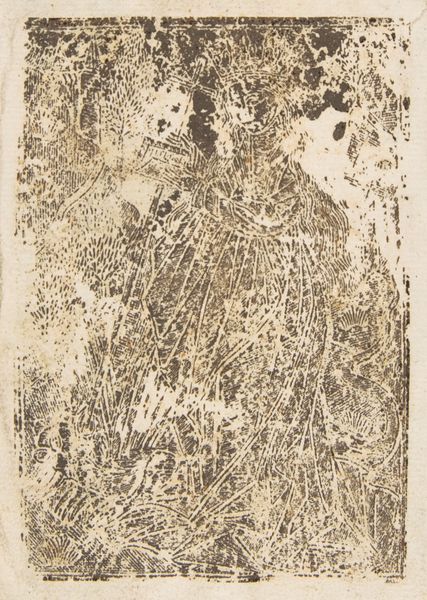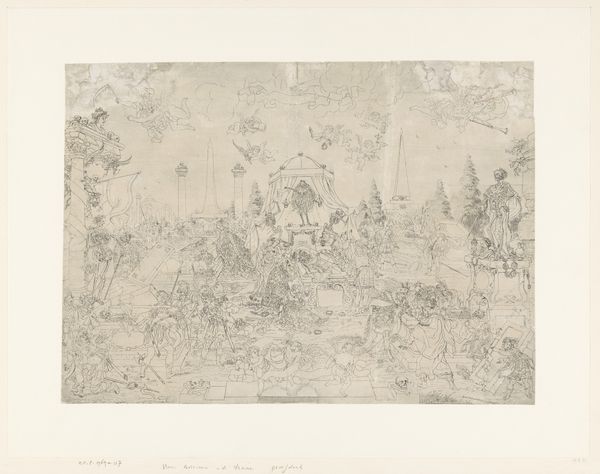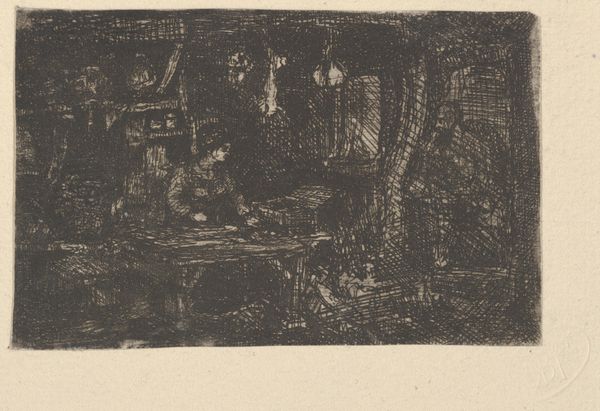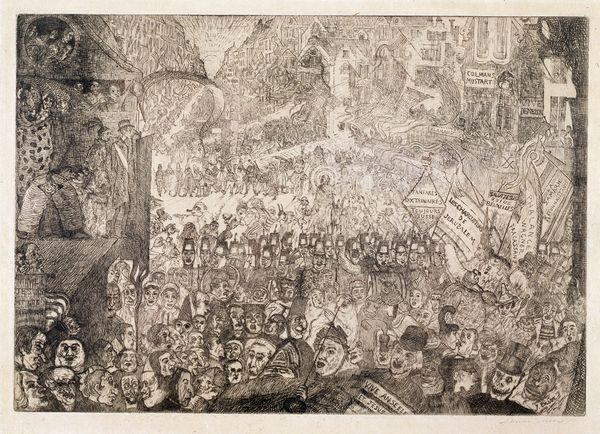
print, woodblock-print
#
narrative-art
# print
#
asian-art
#
ukiyo-e
#
figuration
#
woodblock-print
#
calligraphy
Dimensions: H. 14 1/8 in. (35.9 cm); W. 19 1/4 in. (48.9 cm)
Copyright: Public Domain
Curator: At first glance, the graphic energy of this print overwhelms! So many characters intertwined with columns of text—it’s practically a vibrating field. Editor: Indeed. This is a woodblock print by Torii Kiyonaga, likely created between 1790 and 1810, entitled "Program for Kawarazaki Theater". It’s a stunning example of ukiyo-e from that period. What's immediately compelling to me is the way Kiyonaga uses the visual space to both present information and depict the cultural significance of Kabuki theater in Edo society. Curator: Tell me more. The placement of the figures strikes me. Look how they are relegated to the lower portion. This artistic decision seems to emphasize the dominance of text. Is the text the most crucial component here? Editor: In a way, yes. This print served as an actual playbill. The calligraphy would have listed actors, roles, and other pertinent information for theatergoers. Kiyonaga deftly balances this pragmatic function with the depiction of fashionable women and performers connected to the theater. He blurs the line between commercial advertisement and artistic expression, doesn't he? It’s intriguing to consider the politics of representation, the patronage system, and how theatrical performances played a role in the construction of Edo-era identities. Curator: Ah, I see! The figures themselves aren't merely decoration; they connect directly to the content advertised. However, technically speaking, notice the shallow depth of field. All the figures appear almost on a single plane, enhancing the print’s flat, decorative quality. The repeated geometric patterns in the women's clothing create visual movement, countering any sense of stagnation. Editor: Absolutely, a wonderful formal observation. And what the print signifies historically, to me, is how popular culture found expression through art. These weren’t just announcements; they became collector's items, offering a tangible connection to a beloved aspect of city life and societal expression. Theaters were key establishments in creating social connections and this piece encapsulates that moment of history! Curator: A meeting place through art. I now leave seeing that tension, between a singular perspective on theater and a shared collective, makes this print even richer. Editor: Agreed, Kiyonaga’s work provides an engaging synthesis of function and form and reflects the vibrancy of its era.
Comments
No comments
Be the first to comment and join the conversation on the ultimate creative platform.
